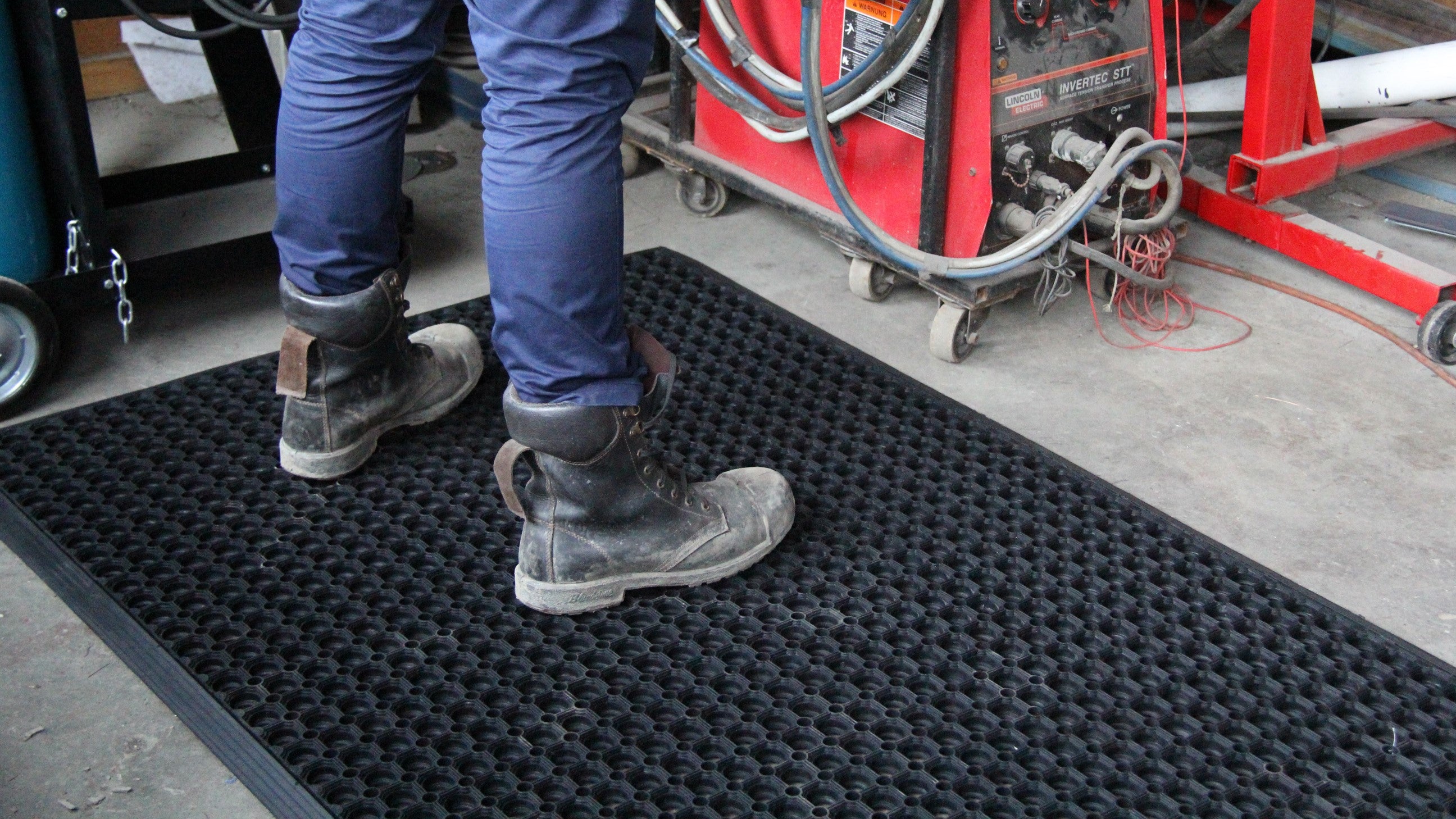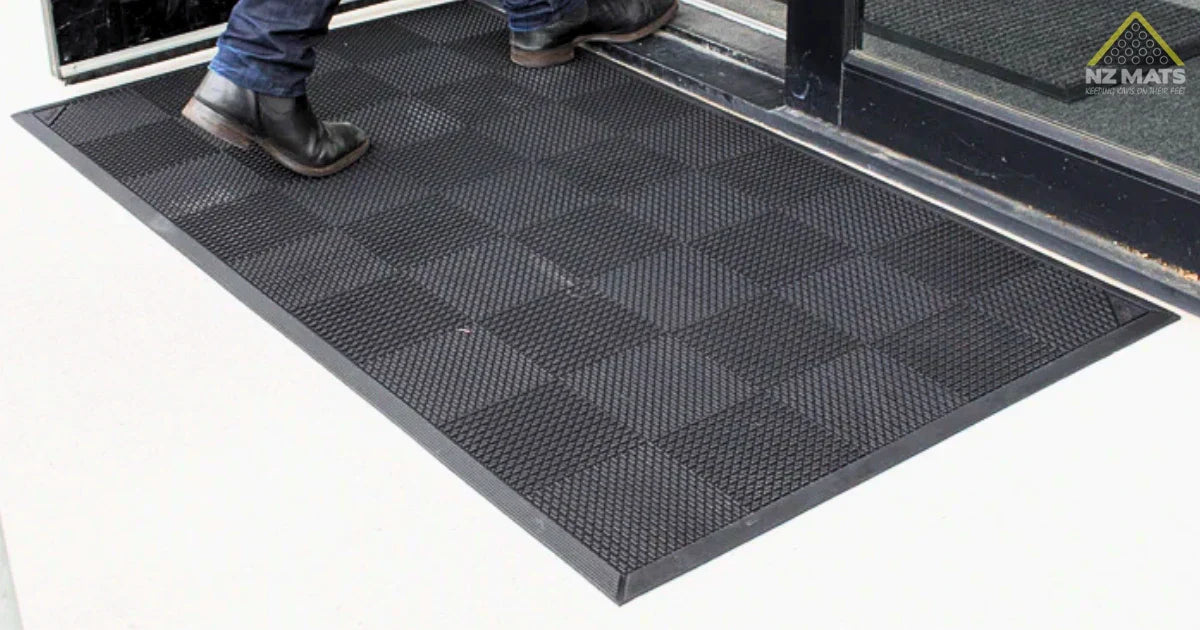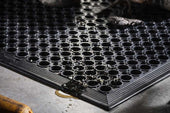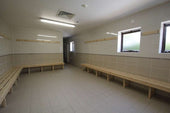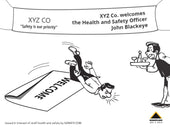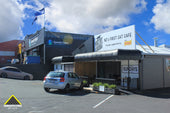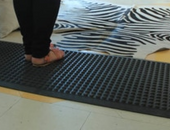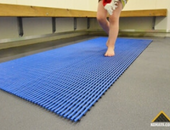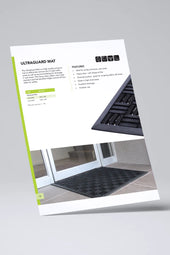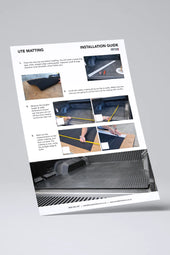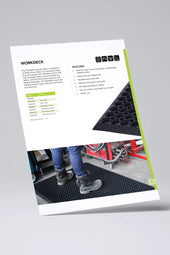School environments are dynamic spaces with students and staff constantly on the move. The need for high-quality school mats goes beyond just aesthetics. Safety is a priority, and preventing slips, trips and falls should be a primary concern for any educational institution. Investing in the right matting solutions minimises risks while ensuring a clean, durable, and comfortable space for learning.
Every area in a school requires a specific type of mat suited to its function and foot traffic levels. A well-placed mat can significantly reduce accidents, manage dirt, and create a more comfortable environment for students and staff.
Smart Matting Matters! The Key Standards for Choosing Mats in School Areas
Safety and Slip Resistance

Schools experience high foot traffic daily. Wet corridors, polished floors, and external pathways can all become hazardous without proper matting solutions. Slip-related injuries pose a serious concern, particularly in areas exposed to moisture.
Selecting school mats designed for safety minimises these risks, ensuring a secure walking surface for students and staff.
Effective matting solutions provide traction and stability in all conditions. Mats with non-slip backing remain secure, preventing unwanted movement on smooth floors. High-traction surfaces add an extra layer of protection, reducing slip hazards in high-traffic zones.
Drainage features are essential in wet areas, such as changing rooms and swimming pool surrounds, allowing water to disperse efficiently and keeping surfaces dry.
Certain mat types deliver the best protection. Safety matting with slip-resistant properties ensures stability in corridors and entrances. Entrance mats absorb moisture while trapping dirt, keeping floors cleaner and safer. Rubber safety mats provide cushioning and traction in playgrounds and gym spaces. In wet zones, vinyl-backed mats prevent slipping while remaining easy to clean.
Durability and Longevity
School mats must withstand constant use. Foot traffic, chair movement, and exposure to dirt can wear down low-quality mats quickly. Schools require durable materials that maintain their structure and effectiveness over time.
Heavy-duty materials such as rubber, vinyl, and reinforced carpet fibres provide longevity, making them ideal for high-traffic areas.
Outdoor mats require UV-resistant materials to withstand harsh weather conditions. Mats placed in areas exposed to chemicals, such as science labs, must be resistant to oils, grease and spills to ensure safety and longevity.
Choosing the right materials ensures durability. Marine carpet/matting provides resilience in classrooms and hallways, standing up to continuous use. Outdoor playground mats made from durable rubber withstand heavy impacts, offering protection during play. Nitrile matting resists oil, grease, and chemical exposure, making it ideal for science labs and workshops.
Comfort and Noise Reduction

Classrooms, libraries, and staff workstations require mats that provide comfort and noise absorption. Standing for extended periods can cause discomfort and fatigue, particularly for teachers and staff. Mats designed for ergonomic support help alleviate pressure and create a better working environment.
Mats with foam-backed or padded surfaces offer additional comfort, reducing strain on feet and joints.
Anti-fatigue mats placed in science labs, teacher workstations, and standing desks reduce discomfort, providing essential support for those on their feet for long hours.
Ideal mat choices include non-slip matting for areas prone to become slippery. Anti-fatigue mats placed in work areas improve posture and reduce strain on the body.
Hygiene and Ease of Cleaning
Maintaining cleanliness in schools is essential for health and safety. Mats play a crucial role in trapping dirt, preventing the spread of bacteria, and reducing allergens in indoor spaces. Selecting mats that support hygiene efforts ensures a cleaner and safer learning environment.
Washable mats provide an effective solution for maintaining hygiene. Antimicrobial nitrile mats limit bacterial growth, making them ideal for food areas and play zones.
Smooth-surfaced rubber mats prevent dirt build-up, allowing easy cleaning.
Schools benefit from using washable entrance mats that trap moisture and debris before it enters the building. Antimicrobial nitrile mats and oil resistant mats in play areas and cafeterias help maintain hygienic spaces. Interlocking rubber mats in gymnasiums and sports facilities allows quick cleaning and maintenance.
Suitability for Specific Areas
Different school areas require specific matting solutions. Each space presents unique challenges, from wet zones to high-traffic corridors. Choosing the right school mats ensures maximum safety, durability, and functionality.
Entrance Areas and Hallways
Entrances and hallways experience the highest foot traffic. Moisture, dirt, and debris are common challenges in these spaces. Dirt-trapping entrance mats prevent grime from spreading indoors. Heavy-duty rubber-backed carpet runners maintain cleanliness while withstanding daily use.
Playgrounds and Sports Facilities

Outdoor and indoor sports areas demand mats that provide impact absorption and safety. Rubber playground tiles offer cushioning, reducing the risk of injuries. Synthetic turf mats create a durable, weather-resistant surface for active play. Sports hall flooring supports high-impact activities, preventing slips and injuries.
Wet Areas (Changing Rooms, Pool Areas, Science Labs)
Wet environments pose a significant slip hazard. Mats with drainage features and non-slip properties help manage water build-up. Drainage rubber mats keep floors dry and prevent accidents. Chemical-resistant mats provide extra safety in science labs where spills occur every day.
Cafeterias and Lunch Areas
Spills and food debris can make cafeteria floors hazardous. Non-slip mats provide traction and reduce the risk of falls. Oil-resistant rubber mats ensure easy cleaning and prevent slips in food preparation areas.
Prevent Slips, Protect Students: The Case for High-Quality School Matting
Selecting the right school mats enhances safety, comfort, and hygiene in educational environments. Schools must prioritise slip-resistant properties to prevent accidents in high-traffic and wet areas. Durable materials ensure longevity, reducing maintenance costs over time. Noise-absorbing and cushioned mats improve comfort for students and staff, while hygienic options support cleanliness and health.
Investing in high-quality matting solutions reduces risks and enhances learning spaces. Schools benefit from safer walkways, improved indoor air quality, and reduced wear on flooring surfaces. Every mat placement contributes to a more efficient, safer school environment. Aside from mats, schools should also consider safety accessories like stair nosing for added safety.
Schools should prioritise high-quality school mats that meet safety and durability standards. Choosing well-designed matting solutions ensures long-term benefits for both students and staff. NZ Mats provides durable and premium-quality matting options, supporting safety and functionality in educational spaces.


